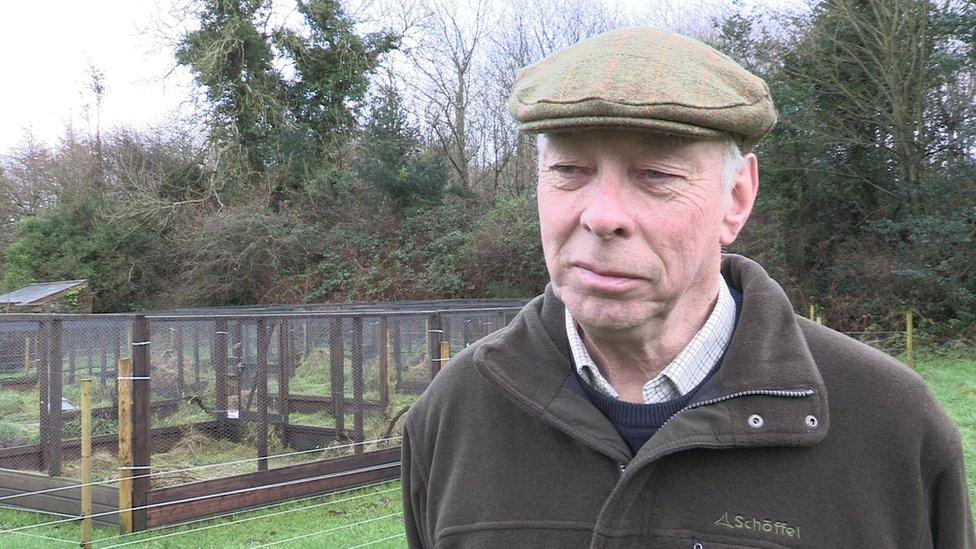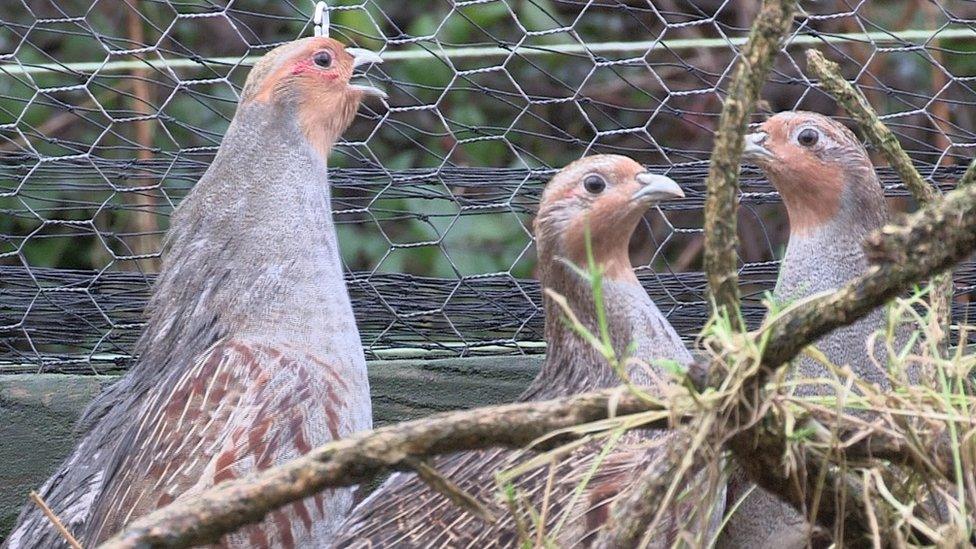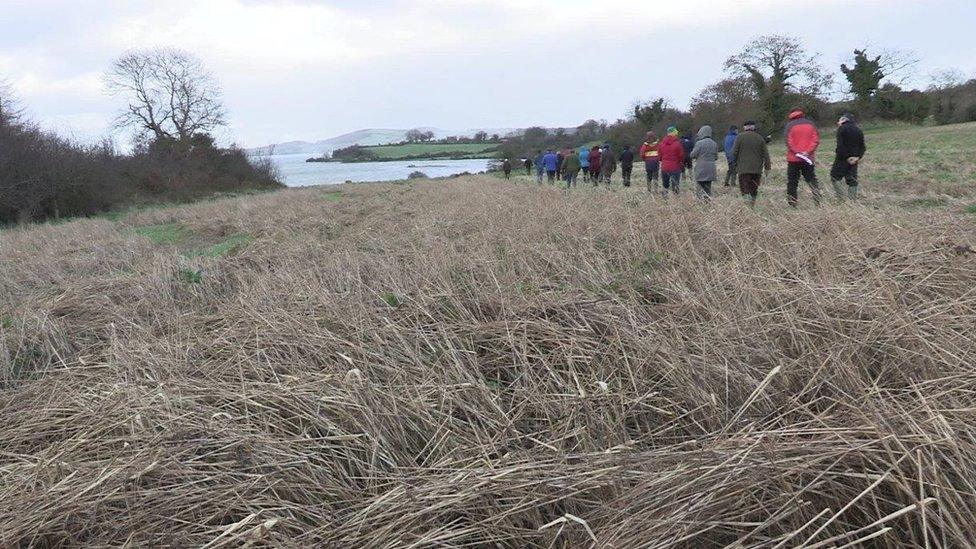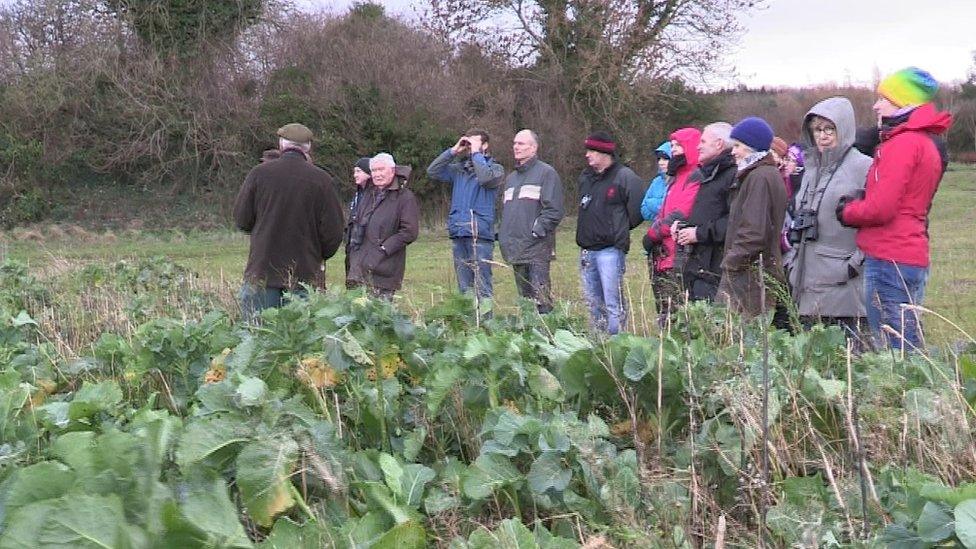Childhood memory inspires return of grey partridge to NI
- Published
The grey partridge was once common, but changes in farming and its own tendency to stick up for itself in a fight, saw its numbers dwindle until it was declared extinct in Northern Ireland.
A boyhood memory prompted David Sandford to try to reintroduce a native bird that died out in Northern Ireland decades ago.
David, a cereal farmer, tends 210 acres of land by the shores of Strangford Lough.
When he was a child, the distinctive call of the grey partridge echoed in the fields around his home.
However, the bird disappeared when changes to the way crops were farmed affected its habitat and food sources.

David has taken delivery of 29 birds and, for the second year, is breeding and releasing them
It was declared extinct from Northern Ireland in 1992.
But in the Irish Republic, a conservation project had captured the few remaining wild birds and established a breeding programme.
Now David has taken delivery of 29 birds and, for the second year, is breeding and releasing them.
The main threats to the grey partridge are predators like fox and pine marten, the weather and the bird's own tendency not to back down from a fight.

The main threats are predators like fox and pine marten, the weather and the grey partridge's own tendency not to back down from a fight
"The great thing about the grey partridge is that they're great parents and that probably has been their demise," said David.
"Most other birds, when a fox comes, will run away. But a grey partridge mother or father will stand up to the fox."
The grey partridge was declared extinct in Northern Ireland in 1992 but has now returned, thanks to a conservation project
For the conservation project to work, David has to farm his crop with the wildlife in mind.
He leaves a three metre wide habitat strip around his barley fields, planted with the kind of tussocky traditional grasses the bird favours.

The cereal farmer has taken delivery of 29 birds and is breeding and releasing them at his home by the shores of Strangford Lough
He gets a subsidy to cover the value of the land he has set aside.
He says that if it were a little more generous, more farmers would participate.
David is a committed conservationist.
This week, he was hosting training for farmers and environmentalists participating in the first survey of farmland birds here.
The Big Farmland Bird Count , external is a UK project.

David leaves a three metre wide habitat strip around his barley fields, planted with the kind of grass the bird favours
It is the first year farmers in Northern Ireland are being asked to contribute.
They are being asked to spend 30 minutes counting the bird life on their farms on any one day between 6 and 14 February.
The idea is to assess the success of wildlife conservation measures on farms.

The farmer is hosting training for other farmers and environmentalists participating in the first survey of farmland birds in Northern Ireland
Memory inspires return of rare bird
The Game and Wildlife Conservation Trust says farms growing cereal are best suited, but dairy and beef farms can also incorporate such measures.
It says it is hoping to see figures yellowhammers being included in the bird count. Spokesman Dave Parish said the bird is declining rapidly in Northern Ireland.